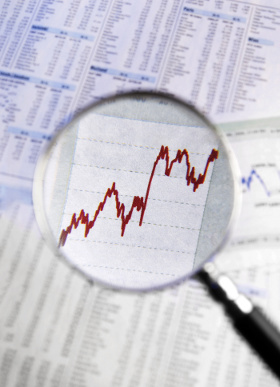Windows to Complexity 2013 II
Nonlinear Dynamics of Speculative Bubbles
in Financial Markets

October 9., Münster
Financial markets such as stock markets, commodity markets, and derivative markets are central to modern economics. On these specialized markets capital is traded in the form of money, stocks and other financial contracts. Balancing capital supply and demand is the important purpose of financial markets.
Prices in financial markets (e.g. stock prices) are typically determined by two components. (1) A fundamental component reflecting real-world economic conditions (e.g. expected future dividend payments in the case of stocks), and (2) a speculative component essentially consisting of market expectations on the future evolution of the price itself (i.e. expectations on how the stock price itself will change in the future). Changing expectations of financial market participants will generally cause nonlinear dynamics in the market price. In some situations exaggerative expectations on the speculative component can give rise to an explosive price behavior called a financial bubble. The dynamics of a bubble is typically characterized by an initial period of rocketing prices up to a certain point in time when the bubble crashes and when prices abruptly return to fundamentally justified levels.
Bubbles can be damaging to the wider economy, especially if they occur in a key market, such as housing or the stock market. A stock market crash can cause a loss of confidence and lower spending. In 1929, the stock market crash was one important factor that triggered the great depression. In similar vein, a bubble in the housing market can be damaging, because housing is the most important form of wealth. If house prices fall rapidly, this may cause a significant fall in consumer spending and can thus cause a recession. For example, the house price bubbles and bust were a strong factor behind the recent recessions in Ireland and Spain.
Typical mathematical tools used to model the dynamics of financial bubbles are based on transformations of diffusion processes. The economic models are usually characterized by stochastic differential or difference equations. Besides theoretical model building, observed real-world financial time series are analyzed by statistical methods (estimation, specification, and hypothesis-testing procedures) in order to detect emerging bubbles.
Invited Speakers
B. Wilfling -
A Brief Introduction to “Bubbles in Financial Markets”
B. Rotermann
Filtering Periodically Collapsing Stock-Price Bubbles Using Sequential Monte Carlo Methods
D. Sornette
Financial Bubbles, Finite-Singularity Models and the ETH Zurich Financial Crisis Observatory
N. Guenster
Bubbles and Long-Term Investors
J. Breitung
Bubble Detection Using Time Series Methods
Downloads and Links


